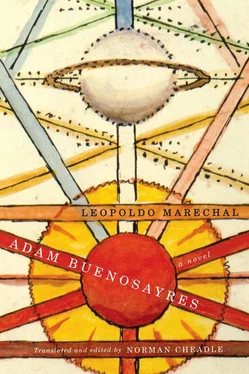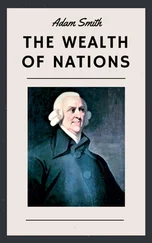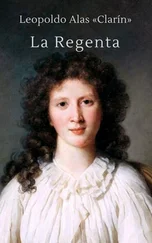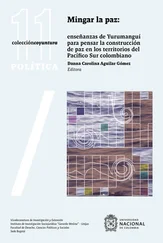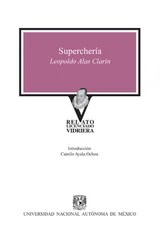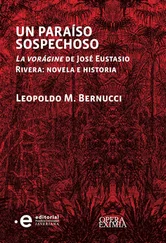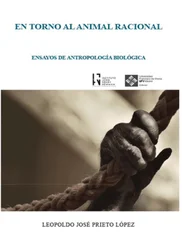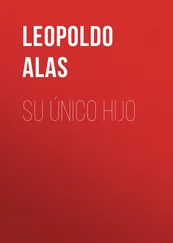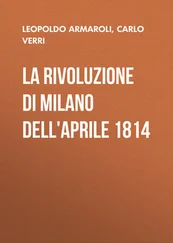In one of Vicente Zito Lema’s rambling interviews with him in the late 1960s, Fijman claims that the Virgin Mary was black. Zito Lema asks him if Jesus Christ, then, was mulatto. Fijman’s reply, though incoherent, is revealing: “La concepción de la virgen es inmaculada. Esto es también secreto de estado. Vía de Cristo. Cristo es rubio. Pero un día fue negro. Y otro verde. Los mulatos son culpables . Se pasan horas y horas tocando el tambor. En Africa ha [sic] visto que sus casas son hornos de barro. Están poseídos por la avaricia” [The Virgin’s conception is immaculate. This too is a state secret. Christ’s Way. Christ is blond. But one day he was black. And another day, green. Mulattos are guilty . They spend hours and hours beating their drums. In Africa I’ve seen that their houses are earthen ovens. They’re possessed by greed] (Zito Lema 68; my emphasis). It seems that for Fijman the mulatto condition denotes or symbolizes a fall from moral purity into impurity and iniquity.
31 Adam’s words — “estoy solo e inmóvil: soy un argentino en esperanza” — echo the title of Scalabrini Ortiz’s El hombre que está solo y espera (1931) [The Man Who Is Alone and Waits/Hopes]. On the intertextual relations between Scalabrini’s essay and Marechal’s novel, see Cheadle, “Twentieth-Century homo bonaerense.”
32 El Espíritu de la Tierra , or Spirit of the Earth, is a mythopoetic notion elaborated in Scalabrini Ortiz in his above-cited essay. It is perhaps the last expression of a kind of mystical telluric organicism cultivated by the previous ( novecentista ) generation of Argentine writers, particularly Ricardo Rojas. Scalabrini’s take on this topos is less earnestly Romantic and more heuristic than that of Rojas, and has nothing of Bernini’s comic bathos.
33 Probable allusion to a prose-poem by Oliverio Girondo (real-life model for Franky Amundsen) entitled Interlunio (1937). The poem’s protagonist tells his quasi-delirious story. Having taken the streetcar out to the edge of the city at night, he is accosted by a cow who talks to him, maternally scolding him. Marechal reviewed the book, admiringly, in Sur 48 (Sept. 1938). Eliseo Subiela includes a sequence based on this episode in his film El lado oscuro del corazón (1992) [The Dark Side of the Heart].
34 Raúl Scalabrini Ortiz (real-life model for Bernini) denounced Britain’s economic colonialism in Argentina in his book Política británica en el Río de la Plata (1936). He carried on his battle against British interference for most of the rest of his life.
35 Variation on the classical saying Carthago delenda est , “Carthage must be destroyed,” traditionally attributed to Cato the Elder, who would have pronounced this opinion prior to the destruction of Carthage by the Romans in 146 BCE.
36 Britain invaded Buenos Aires twice, in 1806 and 1807. It has been argued that this repulsion of British military might was one factor that inspired enough confidence in the porteños to declare independence from Spain in 1810, making Buenos Aires the first Spanish American colony to do so.
37 Las Islas Malvinas : in English known as the Falkland Islands. A group of islands off the Argentine coast, claimed by Argentina against Britain’s de facto possession. Esteban Gómez, Portuguese navigator in the service of Spain, discovered the islands in 1522. However, in 1690 the British claimed the islands. In 1982, the Argentine military dictatorship went to war against Margaret Thatcher’s Britain in a disastrous attempt to recuperate the Malvinas.
38 Lucio alludes to Jacobo Fijman’s version of his first internment in the Hospicio de las Mercedes, a mental asylum in Buenos Aires, which eventually became the Hospital Nacional José T. Borda — known as el Borda , for short. Fijman recounted his hallucinatory experience in “Dos días” [Two Days], a short text first published in the daily newspaper Crítica on 3 January 1927: “I’m perceiving aromas, incense. My body exudes, pore by pore, diverse and penetrating aromas” ( San Julián y otros relatos 28). But in this text he calls himself the Cristo rojo — the Red Christ, not the Black Christ as in Lucio’s version. (The image of a “yellow christ” occurs in “Poema V” of Fijman’s Hecho de estampas [1930]). Fijman surely picked up the phrase “Red Christ” from A. Capdevila’s apocalyptic poem titled “Cristo rojo” (in Melpómene [1912]). In “Dos días” Fijman assumes the identity of the Red Christ while conducting Beethoven’s Ninth Symphony before the multitude, an event he envisioned as heralding “the great work: the Social Revolution” ( San Julián 26). This episode later inspired a similar sequence in Eliseo Subiela’s movie Man Facing Southeast (1986), partly filmed on-site at the Borda. Also on-site at the Borda, Gustavo Fontán, with the Frente de Artistas del Borda, filmed a creative evocation of Jacobo Fijman; a voice-over recites Fijman’s poetry.
39 Jean-Martin Charcot, considered the founder of modern neurology, founded in the late nineteenth century the École de la Salpêtrière, where he followed his particular interest in hypnosis and hysteria. Sigmund Freud was one of his students.
40 Founded in 1876, the Buenos Aires Herald began as a single sheet carrying the shipping news and a few advertisements, but it later became the weekly and then daily newpaper serving Argentina’s English-speaking community. It is published to this day both in print and online.
41 Orlando furioso , by Italian author Ludovico Ariosto (1474–1533). A novel of chivalry wildly popular in its time, and one of Don Quixote’s favourites. The Immortal Knight imitates Orlando (among other literary models) when he feigns madness in the Sierra Morena over the cruelty of his ladylove ( Don Quixote , I, chap. 25).
BOOK THREE, CHAPTER 1
1 Aside from the reference to Ricardo Rojas (see 639n18), Barcia (355n6) detects an allusion to the Argentine poet Manuel de Lavardén (1754–1810) and the well-known opening lines of his “Oda al Paraná” (1801) [Ode to the Paraná]: “Augusto Paraná, sagrado río, / promogénito ilustre del Océano, / que en el carro de nácar refulgente / tirado de caimanes, recamados / de verde y oro, vas de clima en clima, / de región en región, vertiendo franco / suave frescor y pródiga abundancia” [August Paraná, sacred river, / illustrious first-born of the Ocean, / who in the wagon of refulgent mother-of-pearl / drawn by alligators embroidered / in green and gold, you go from climate to climate, / region to region, generously pouring / mild freshness and prodigal abundance].
2 An allusion to Hermann Keyserling’s South American Meditations (see 640n23).
3 An allusion to the misadventures of Don Quixote.
4 As Barcia (360n) observes, Samuel mocks not only Adam’s effusions, but also the opening line of Borges’s famous poem “Fundación mitológica de Buenos Aires” (in Cuaderno San Martín , 1929; later revised as “Fundación mítica de Buenos Aires”) and its evocation of the River Plate: “¿Y fue por este río de sueñera y de barro / que las proas vinieron a fundarme la patria?” (Borges OC I, 81). In Alistair Reid’s translation: “And was it along this torpid muddy river / that the prows came to found my native city?” (Borges, Selected Poems 49).
5 Pereda uses the language of the nineteenth-century frontier in Argentina, where the term cristiano [Christian] is used in opposition to indio [Indian]. In gauchesque literature, cristianos e indios would be roughly the equivalent of Cowboys-and-Indians.
Читать дальше
